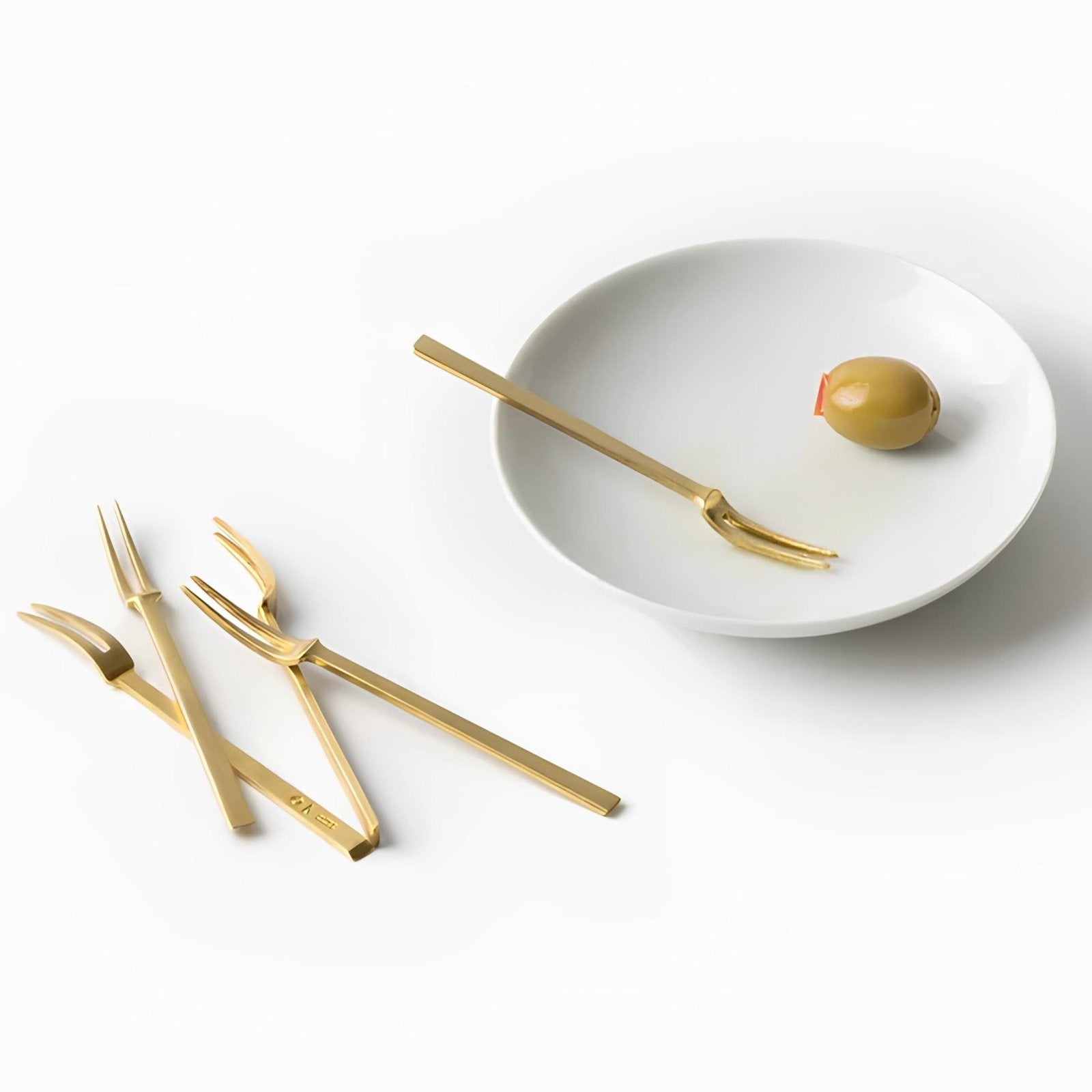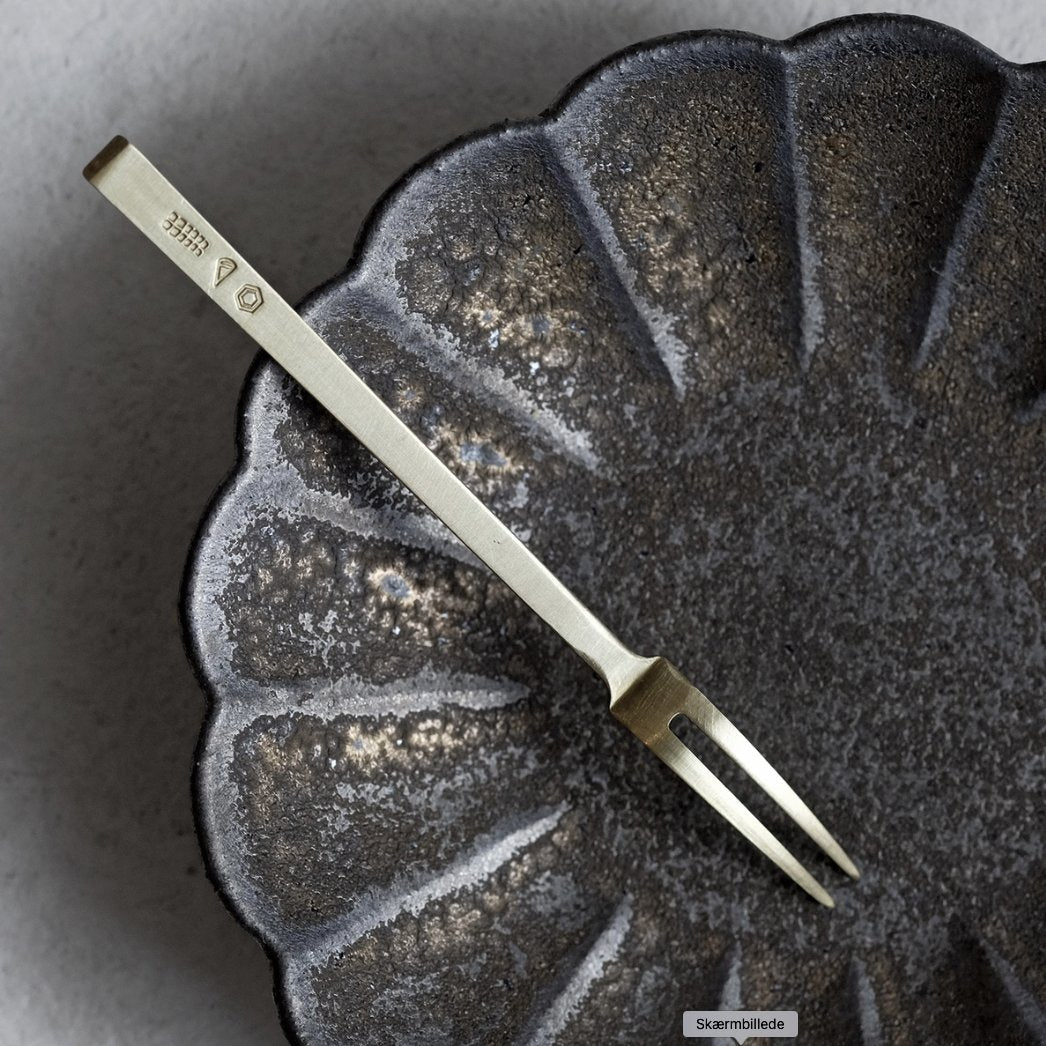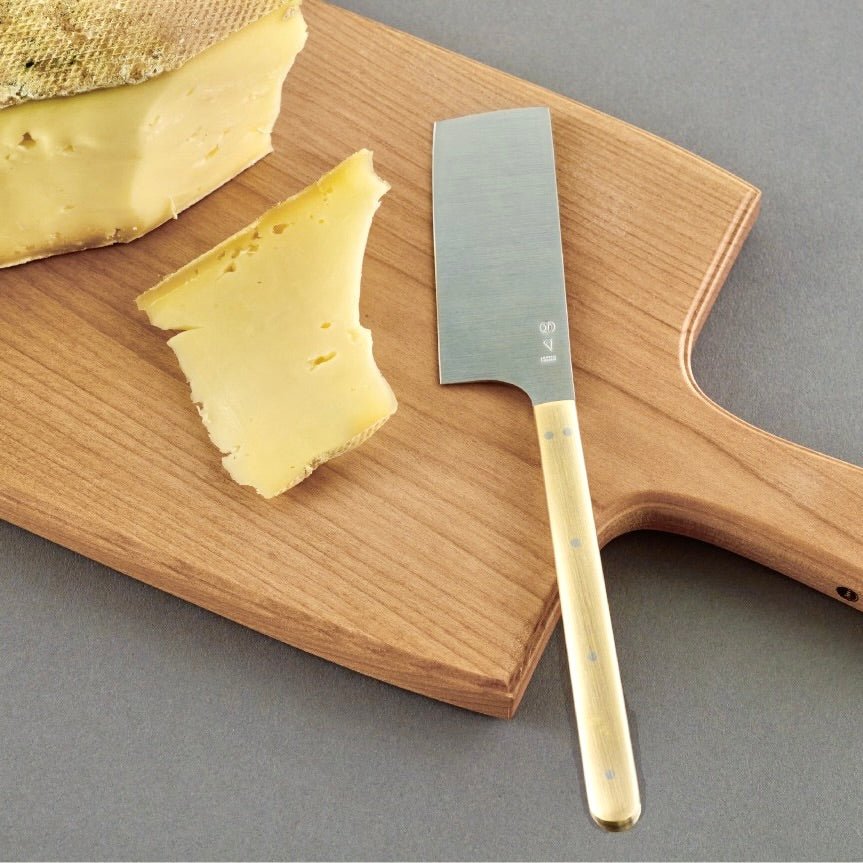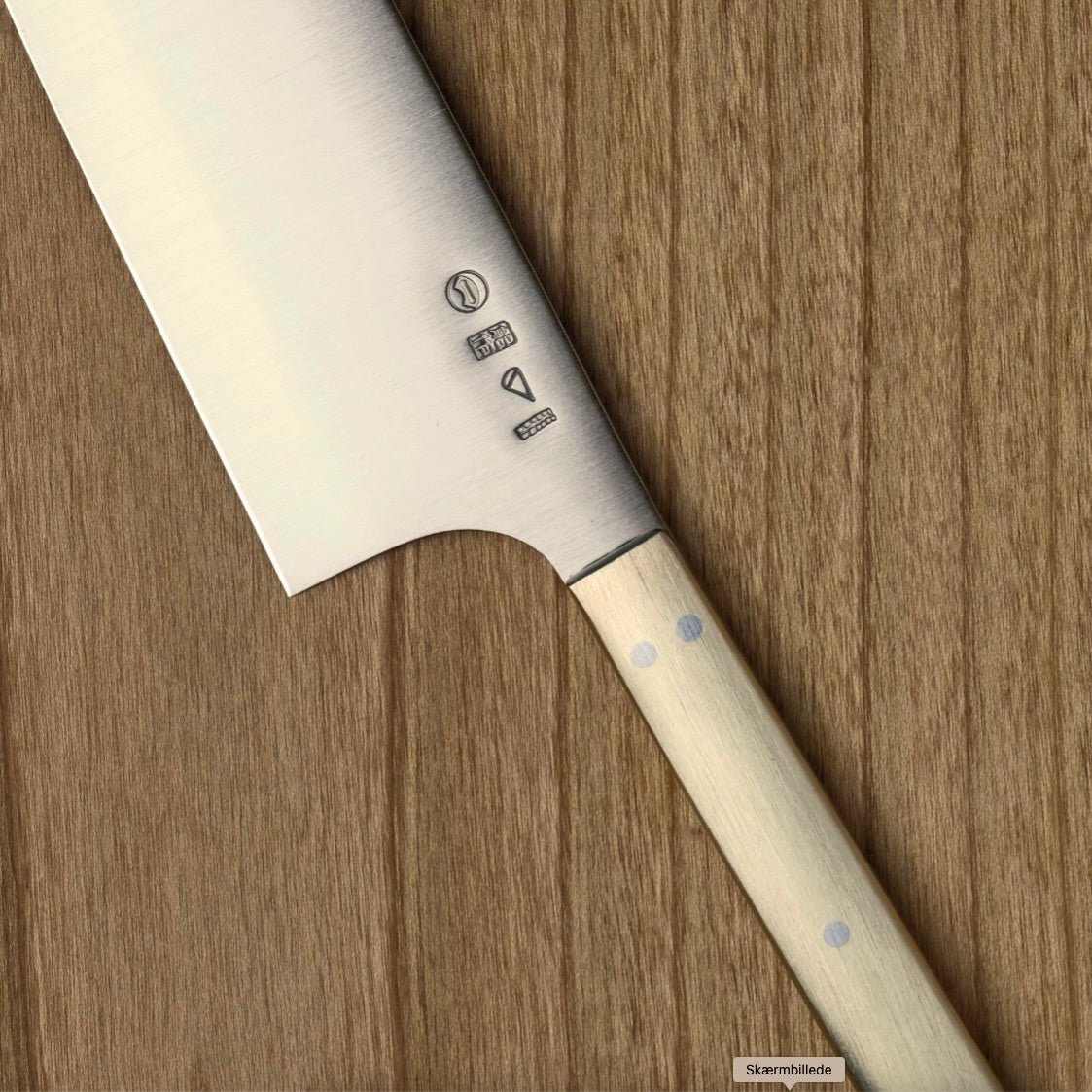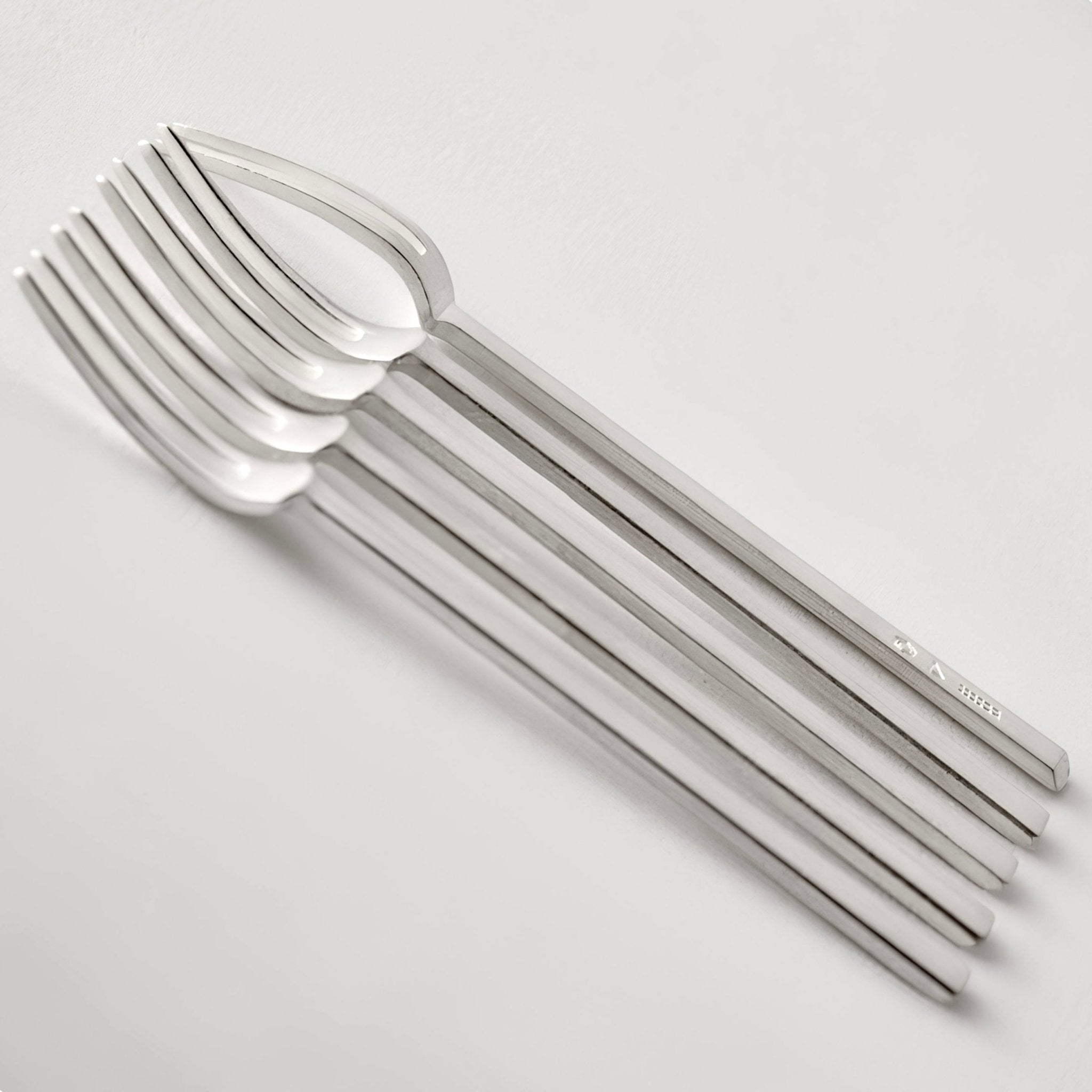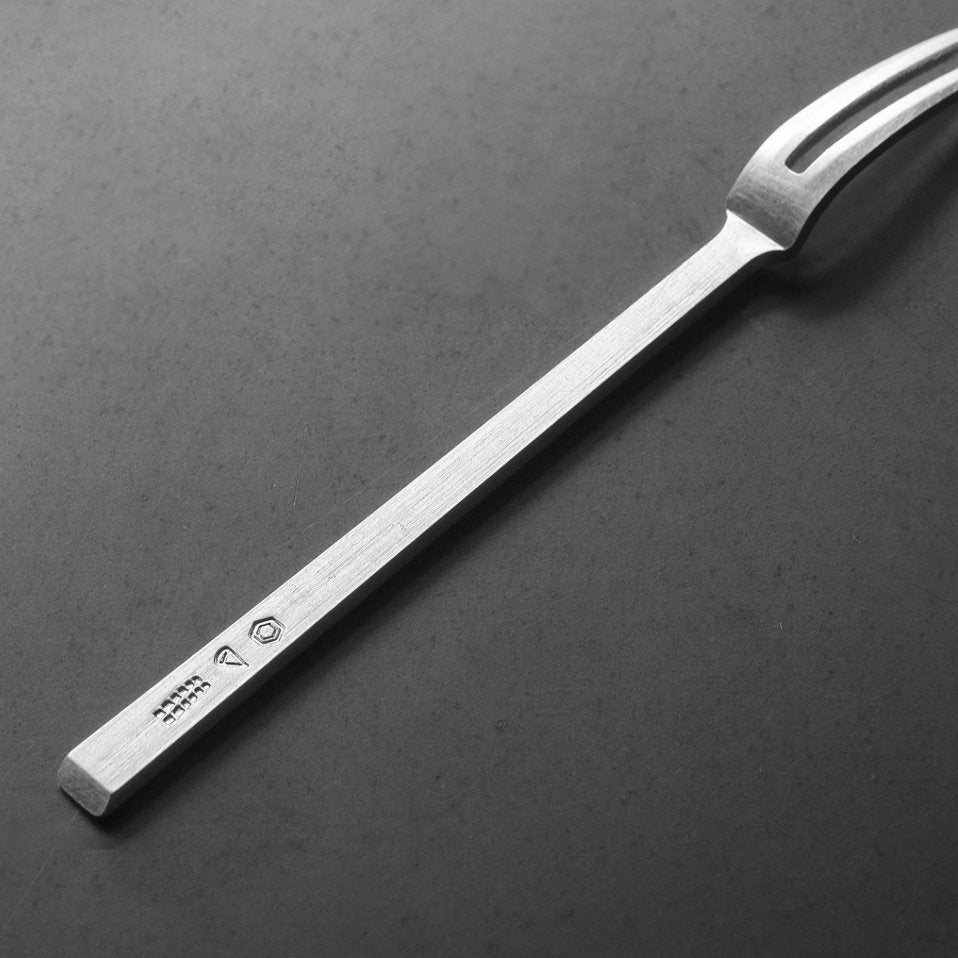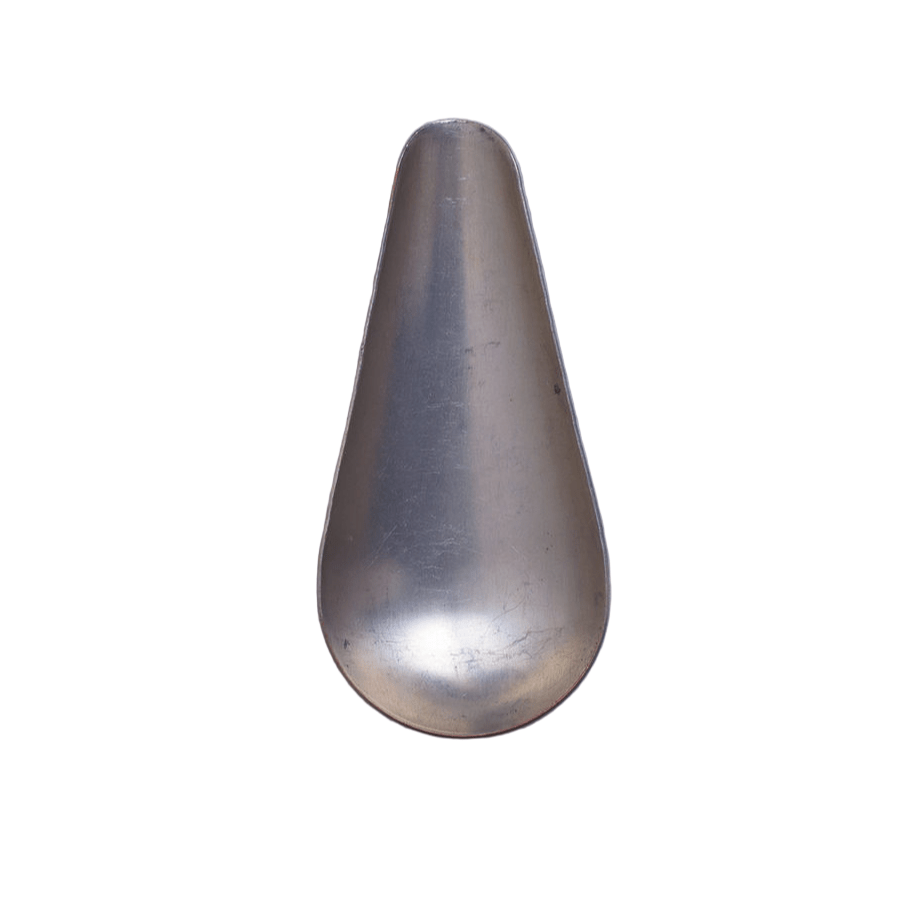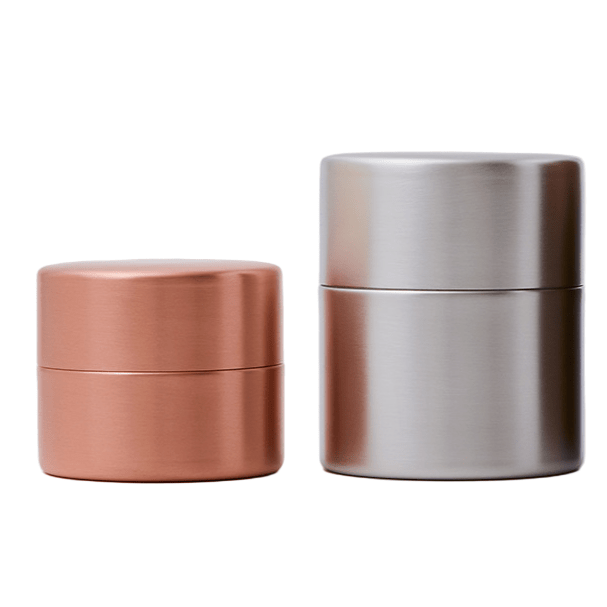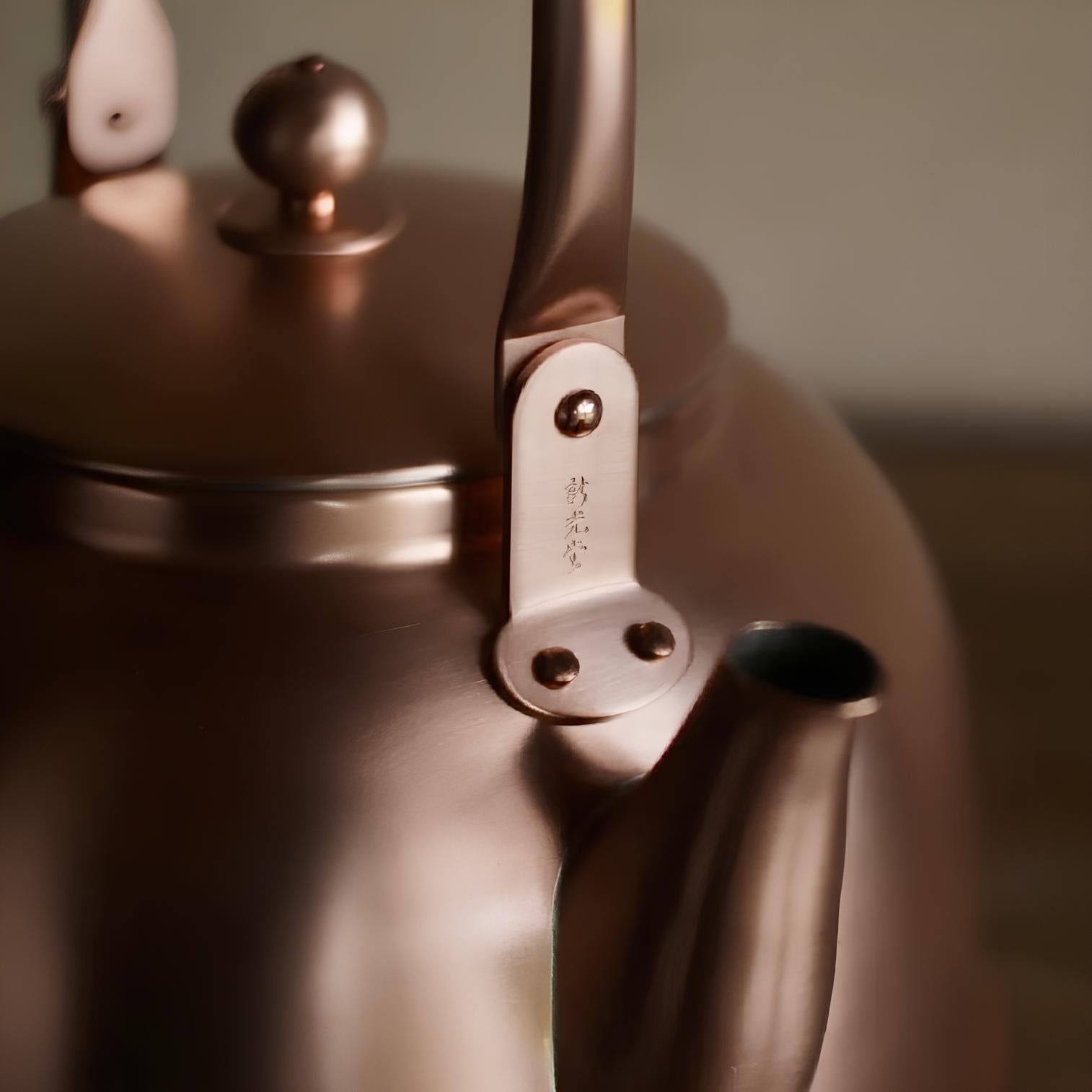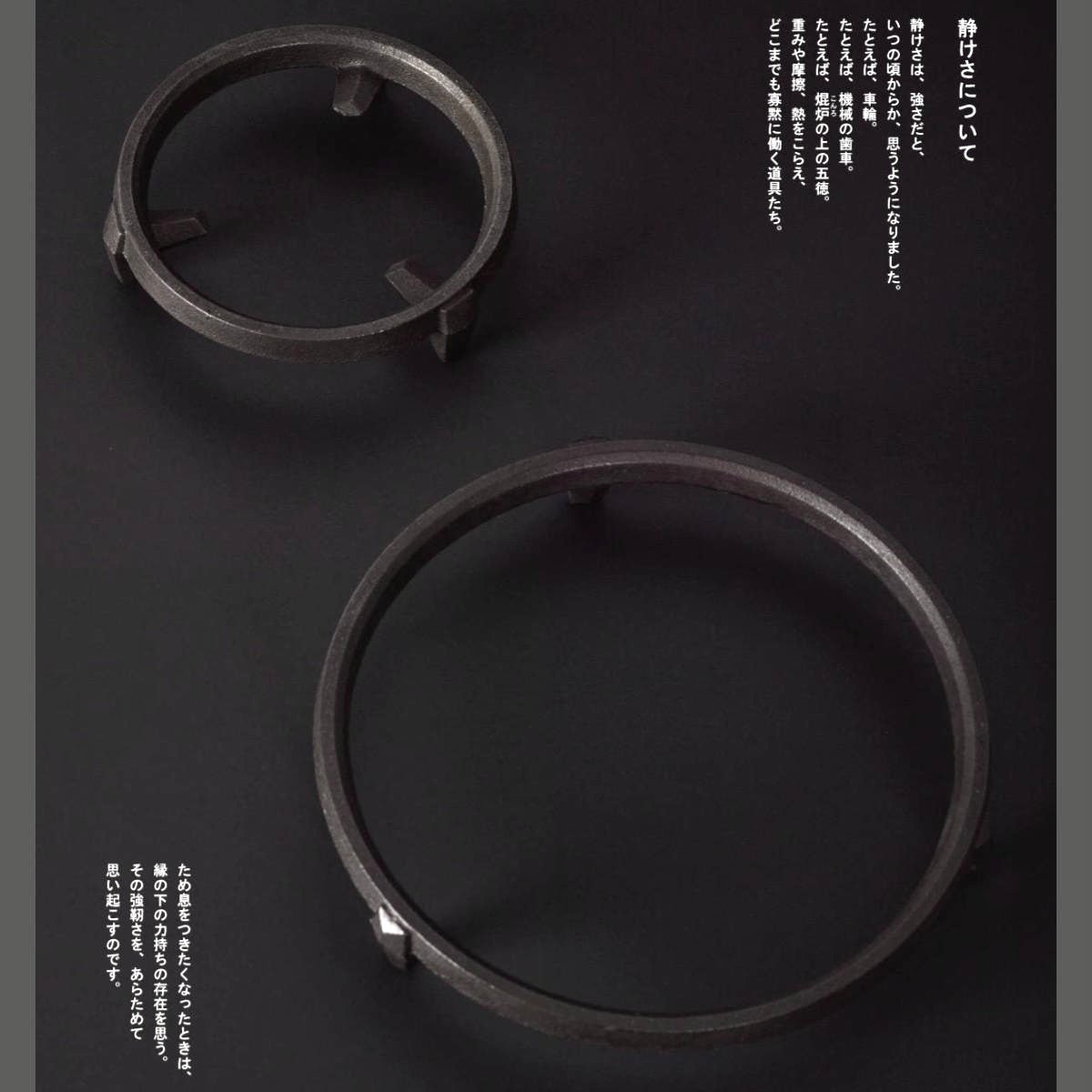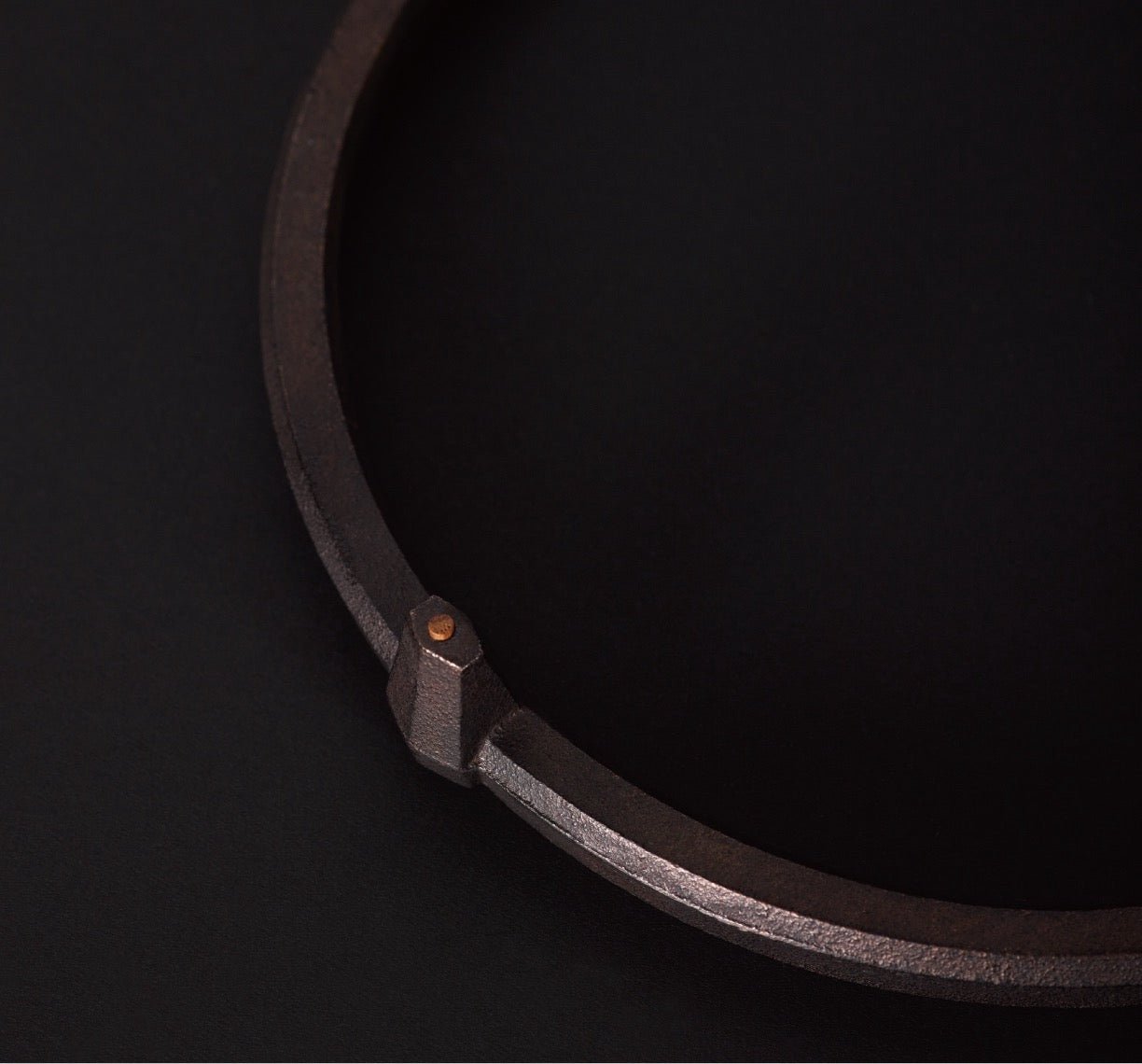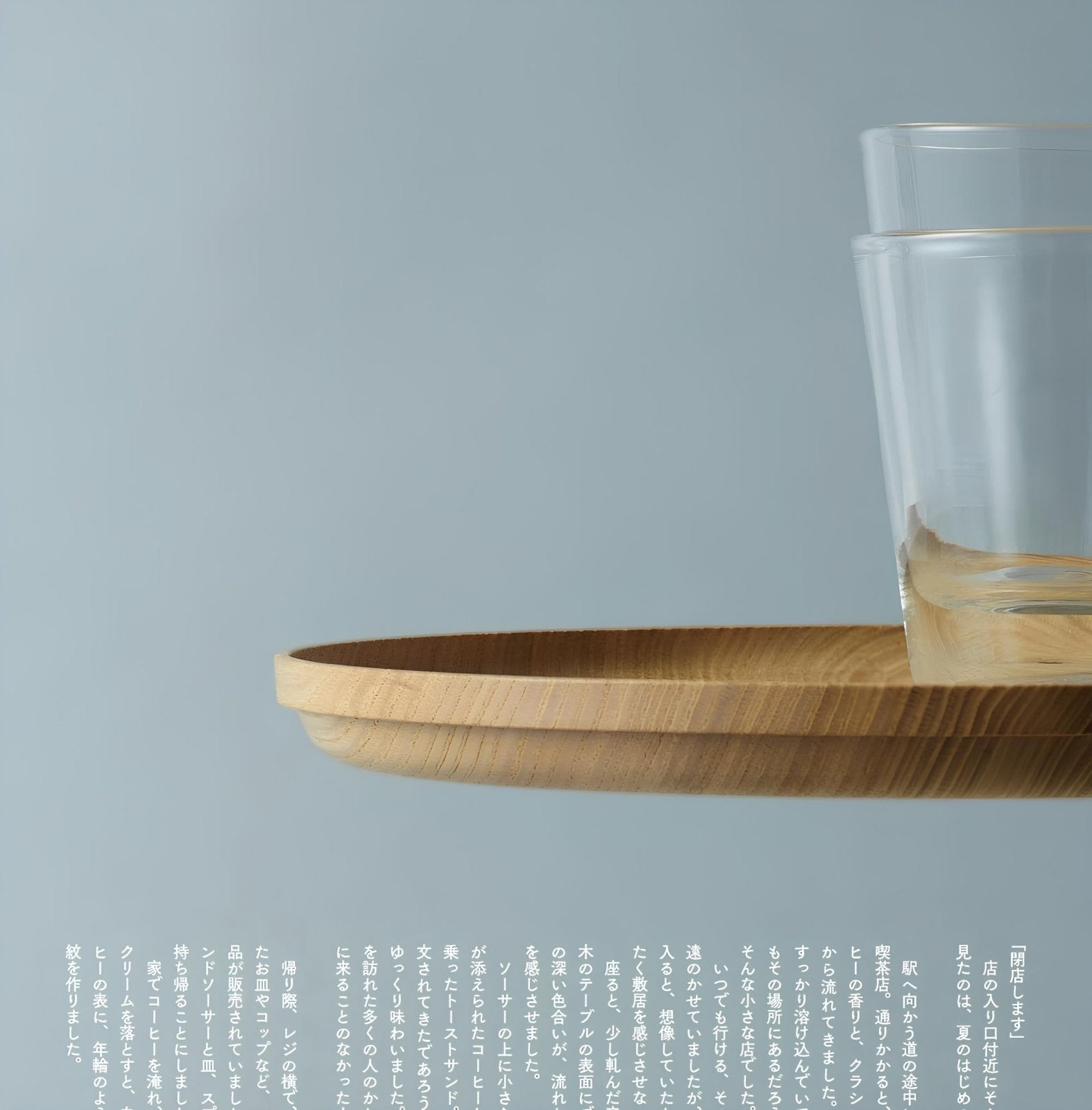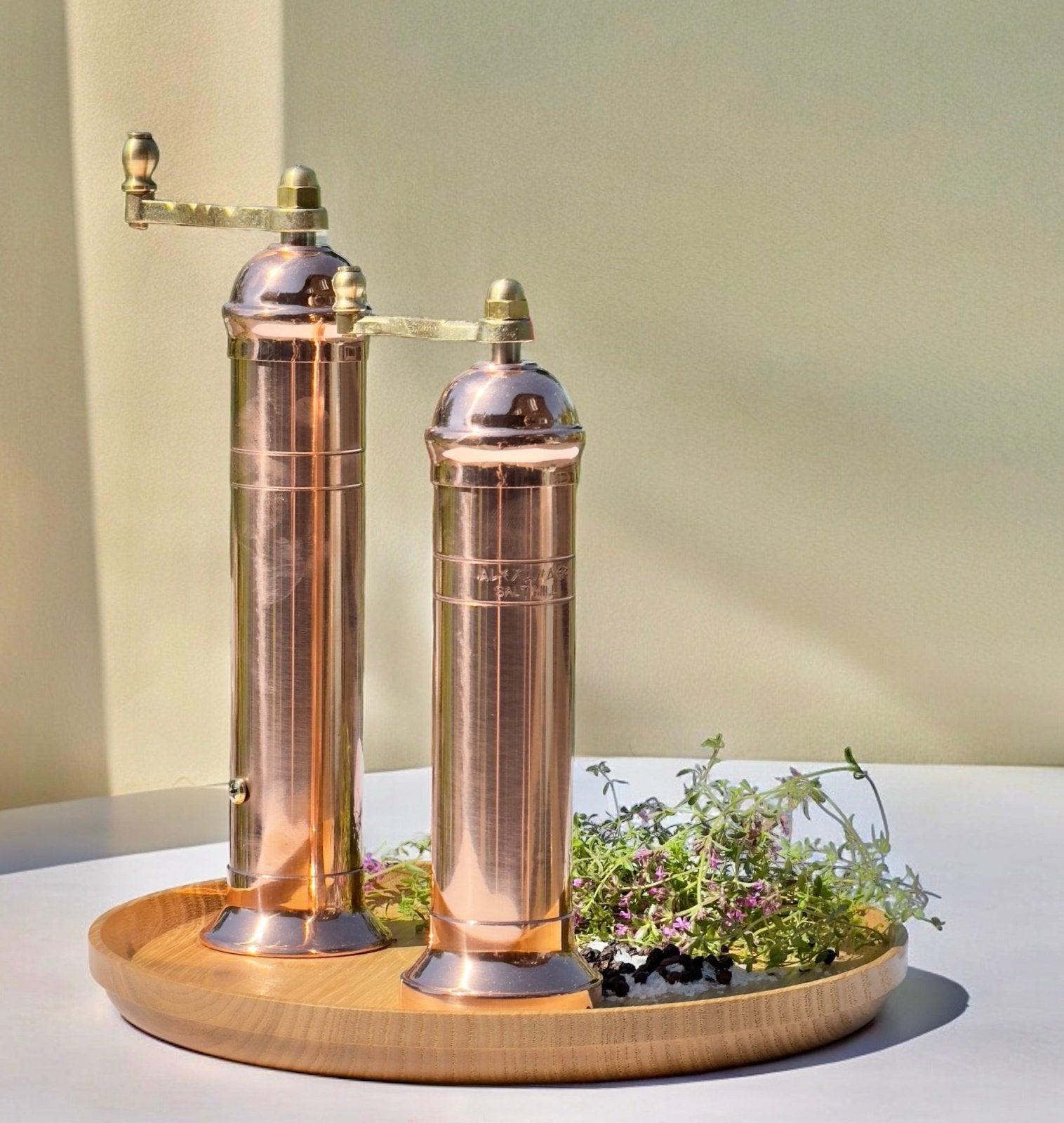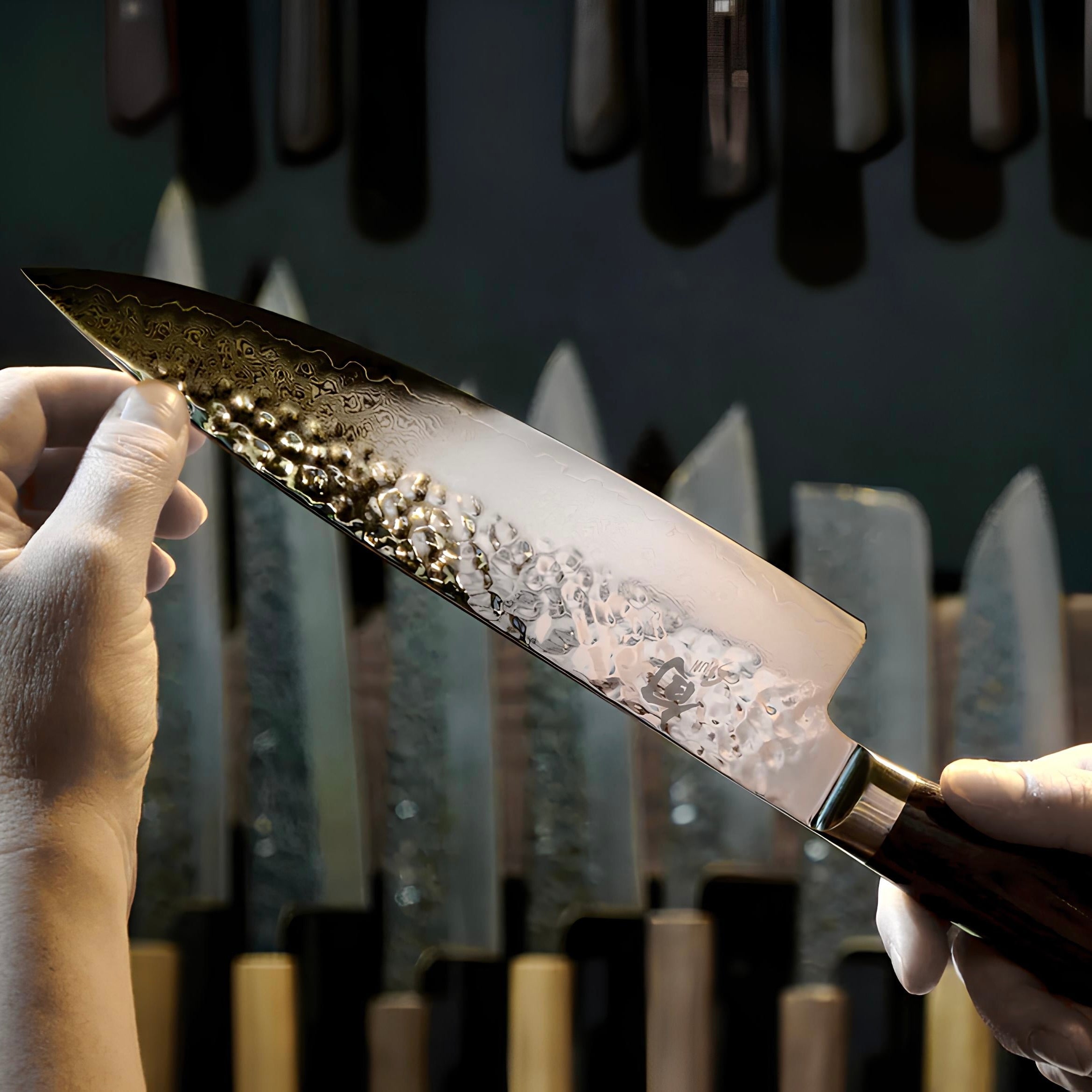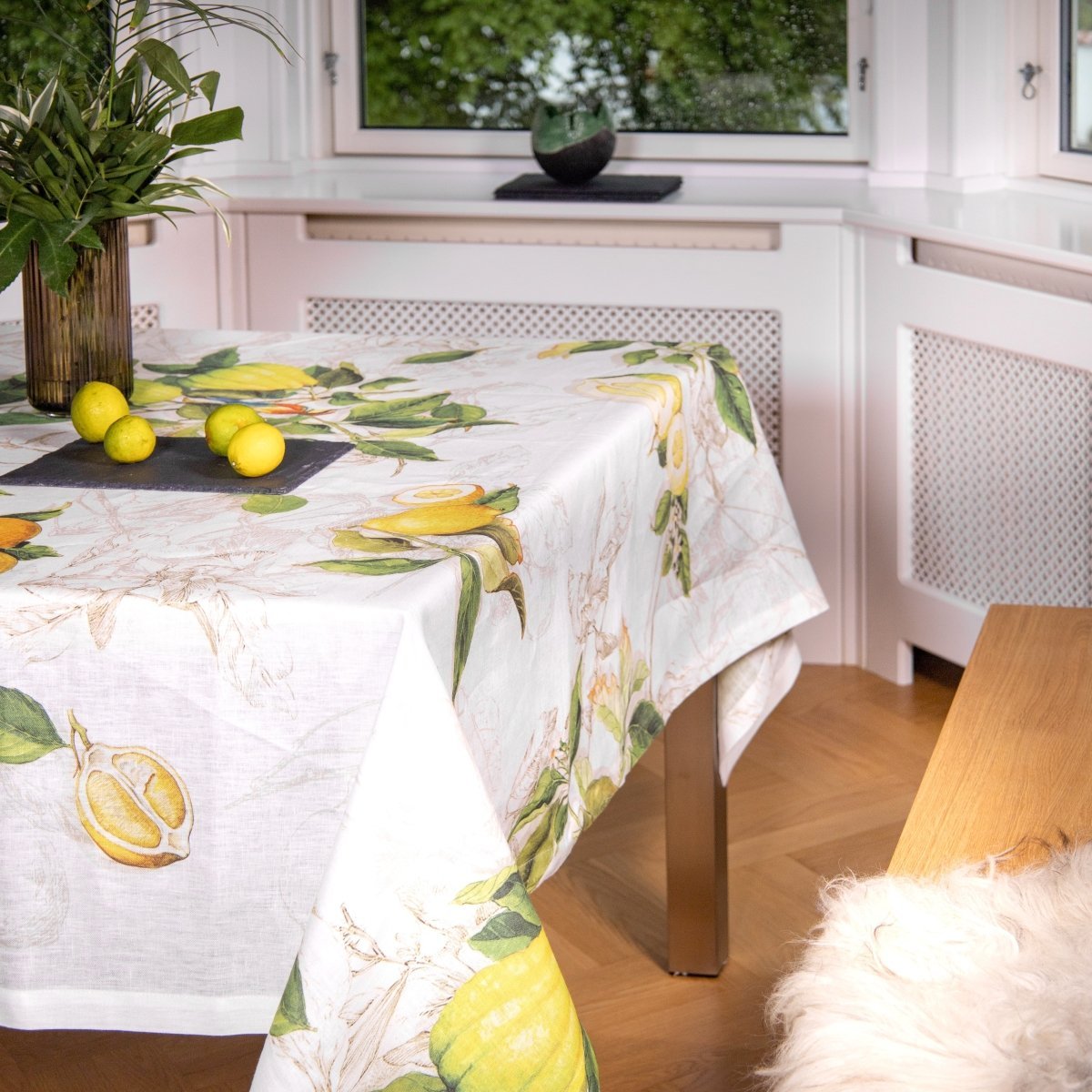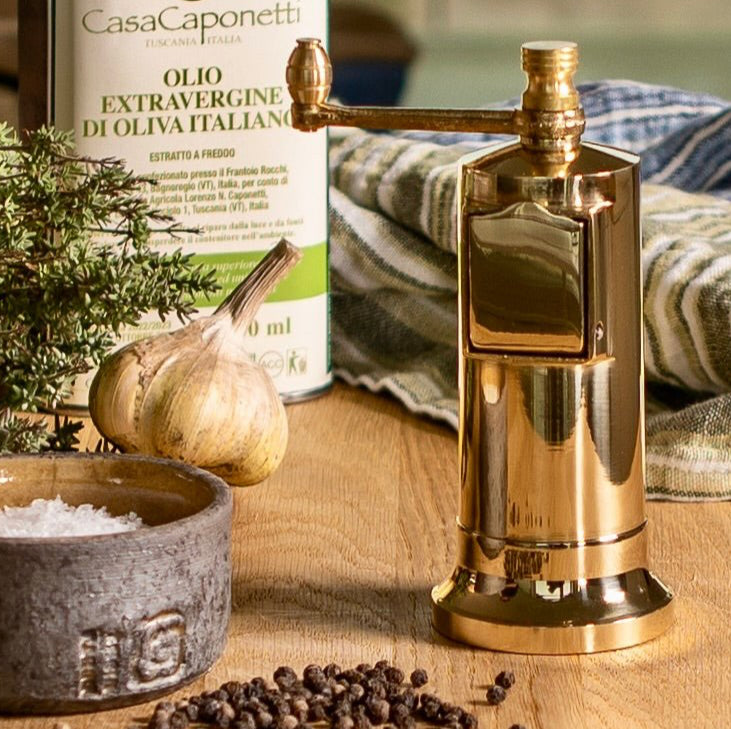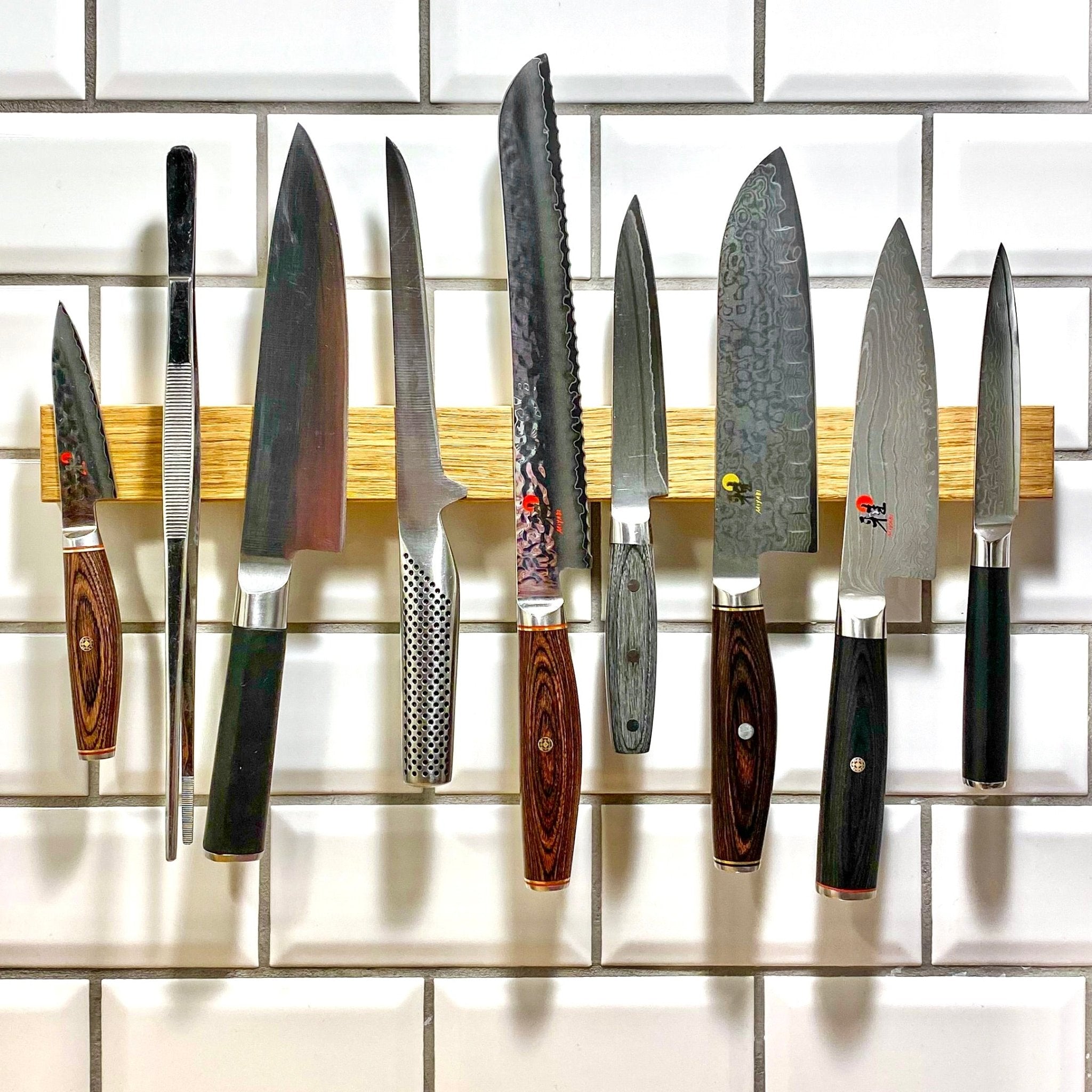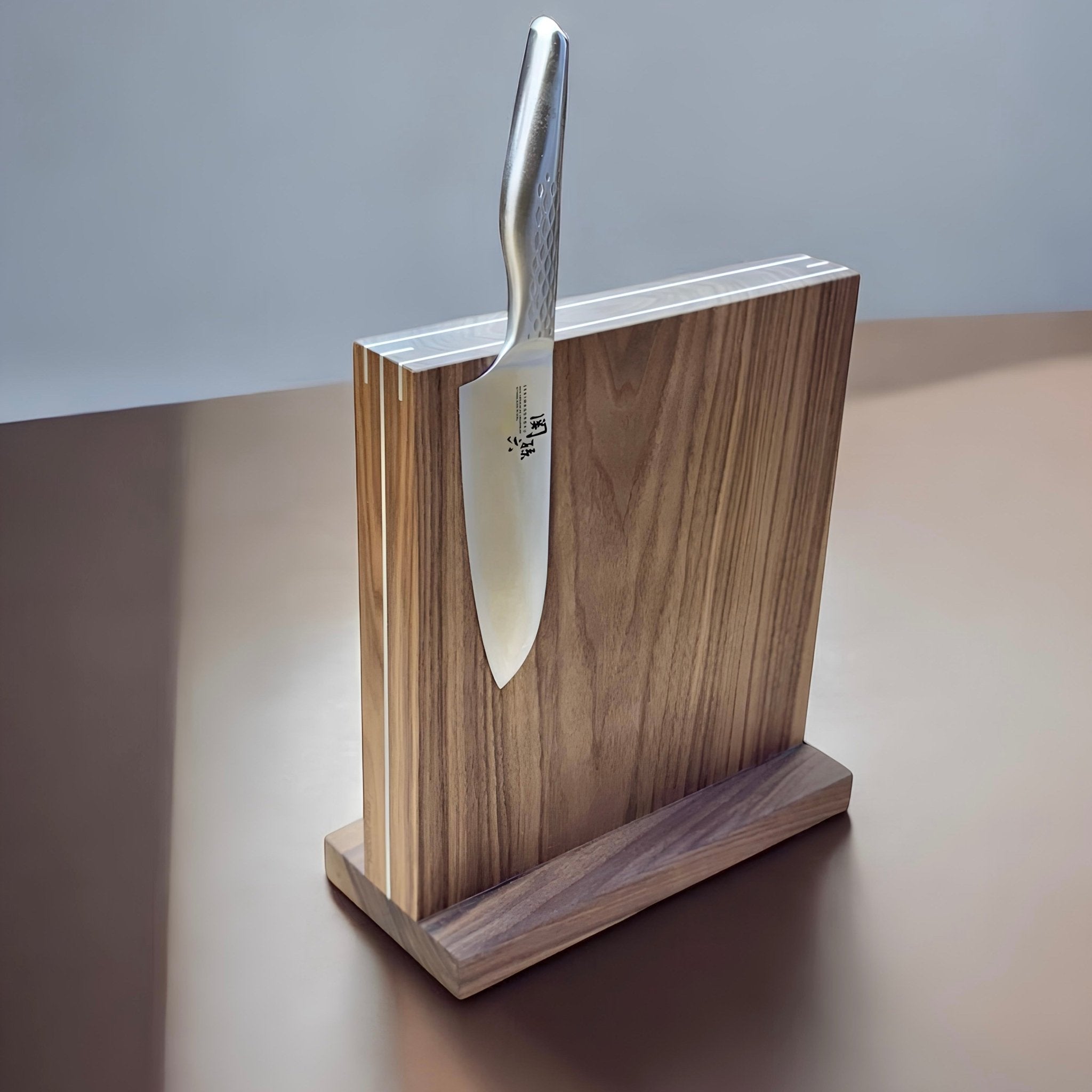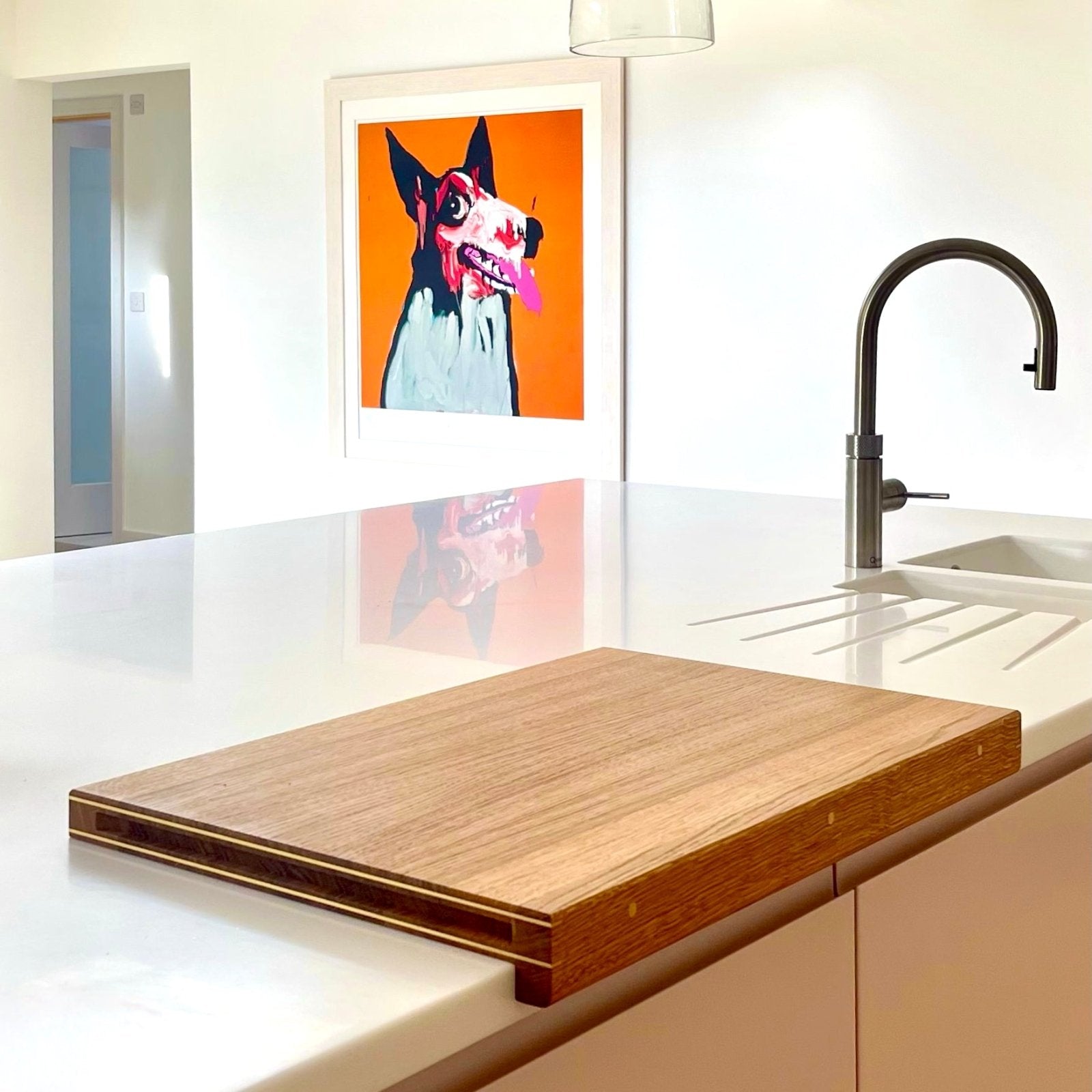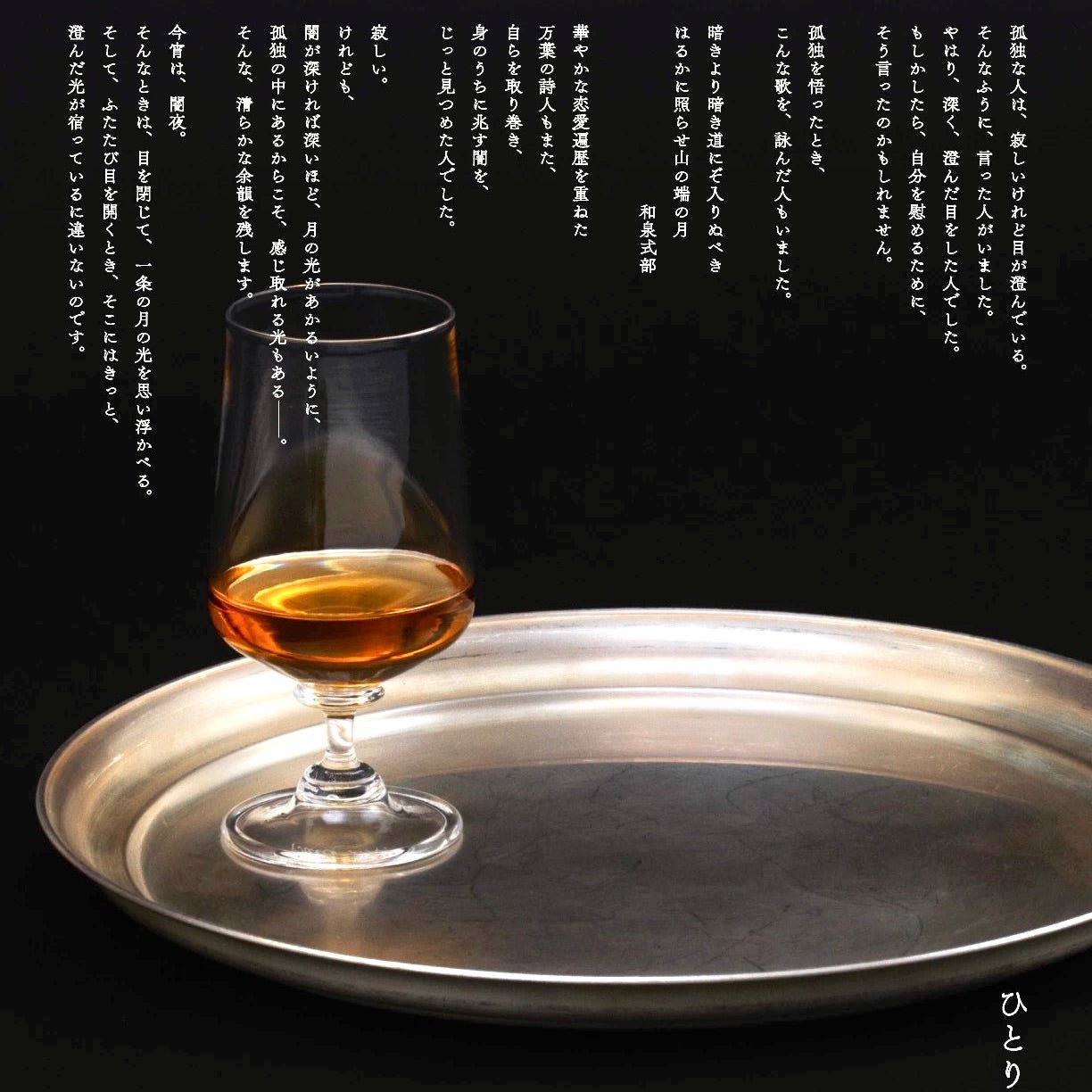
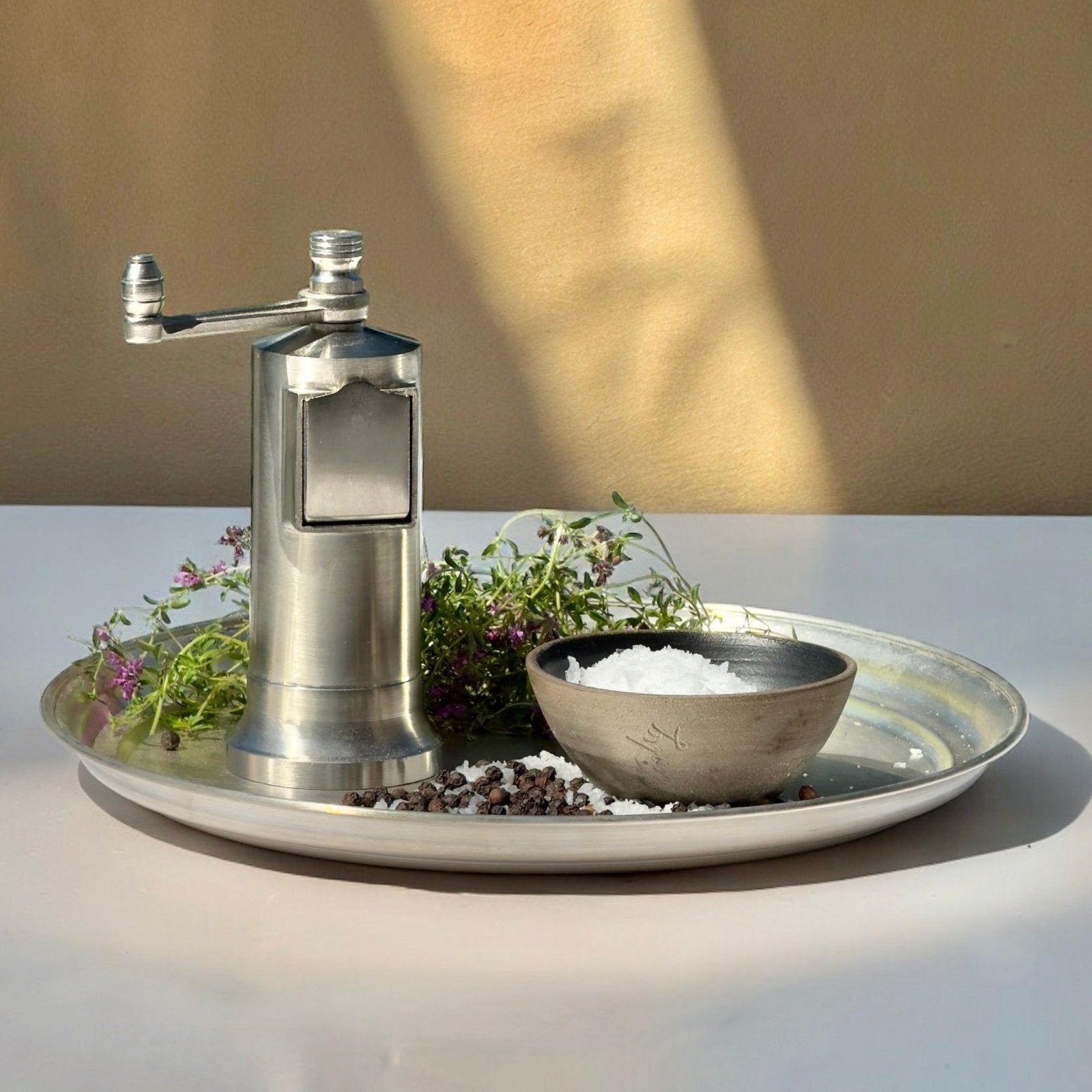


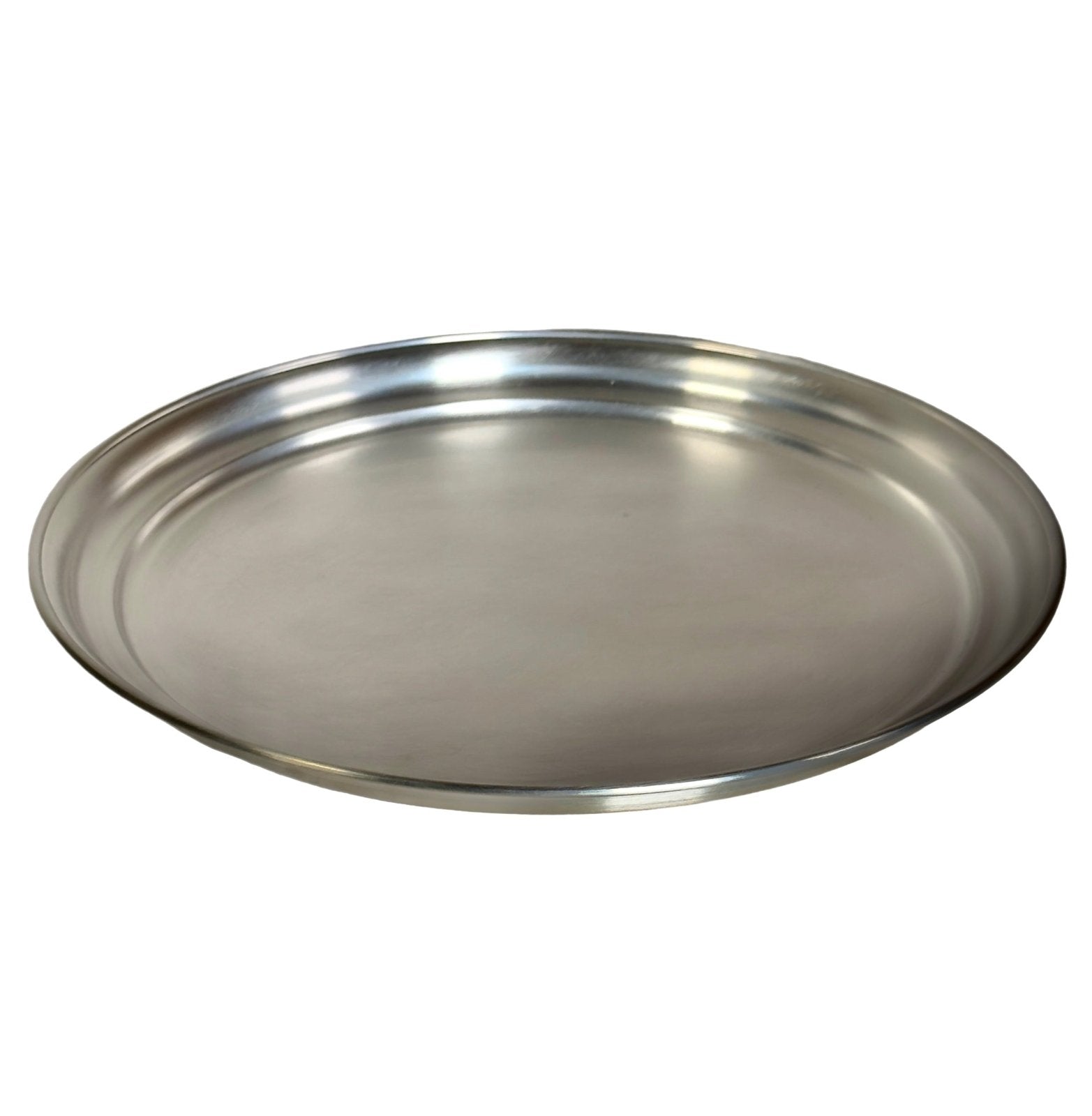
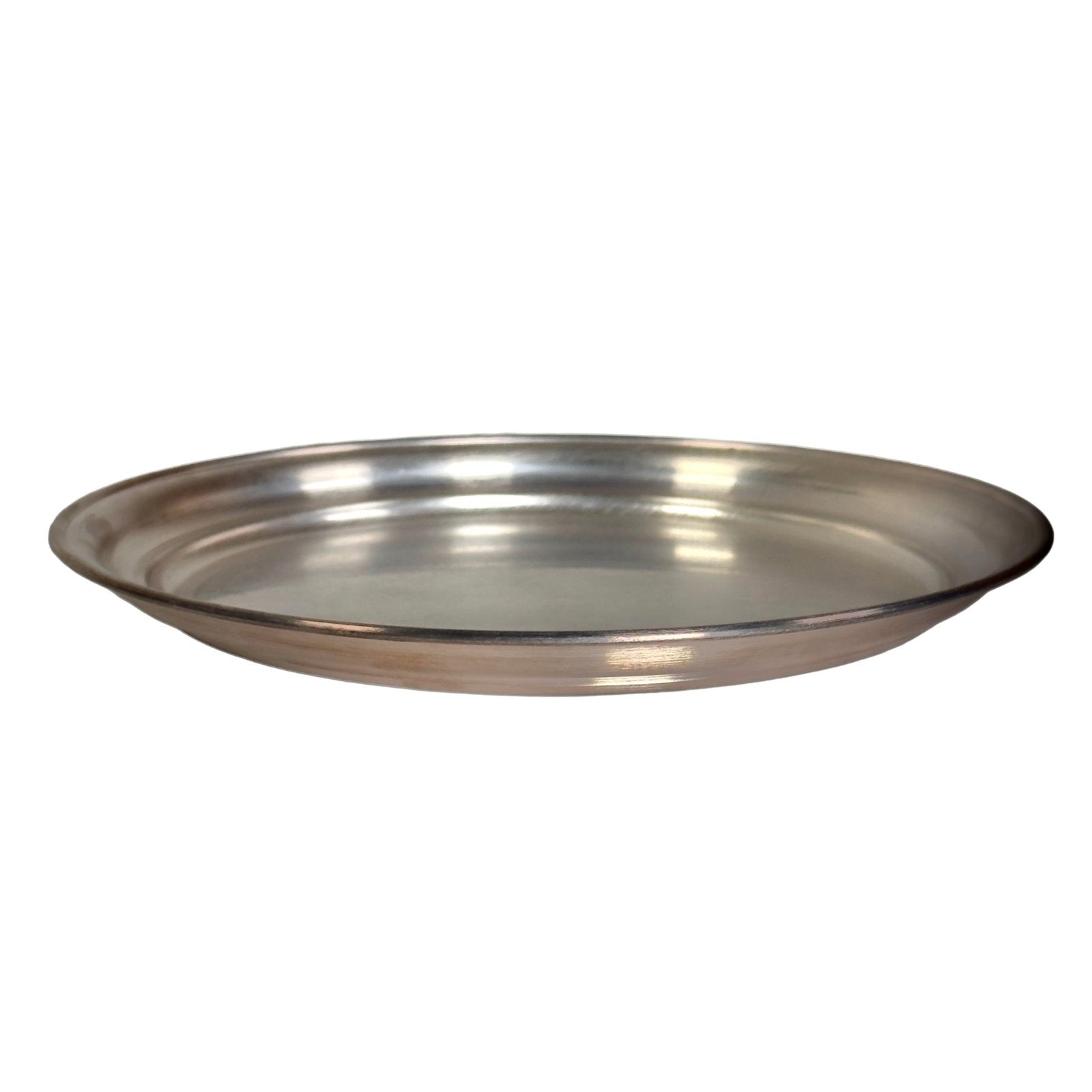
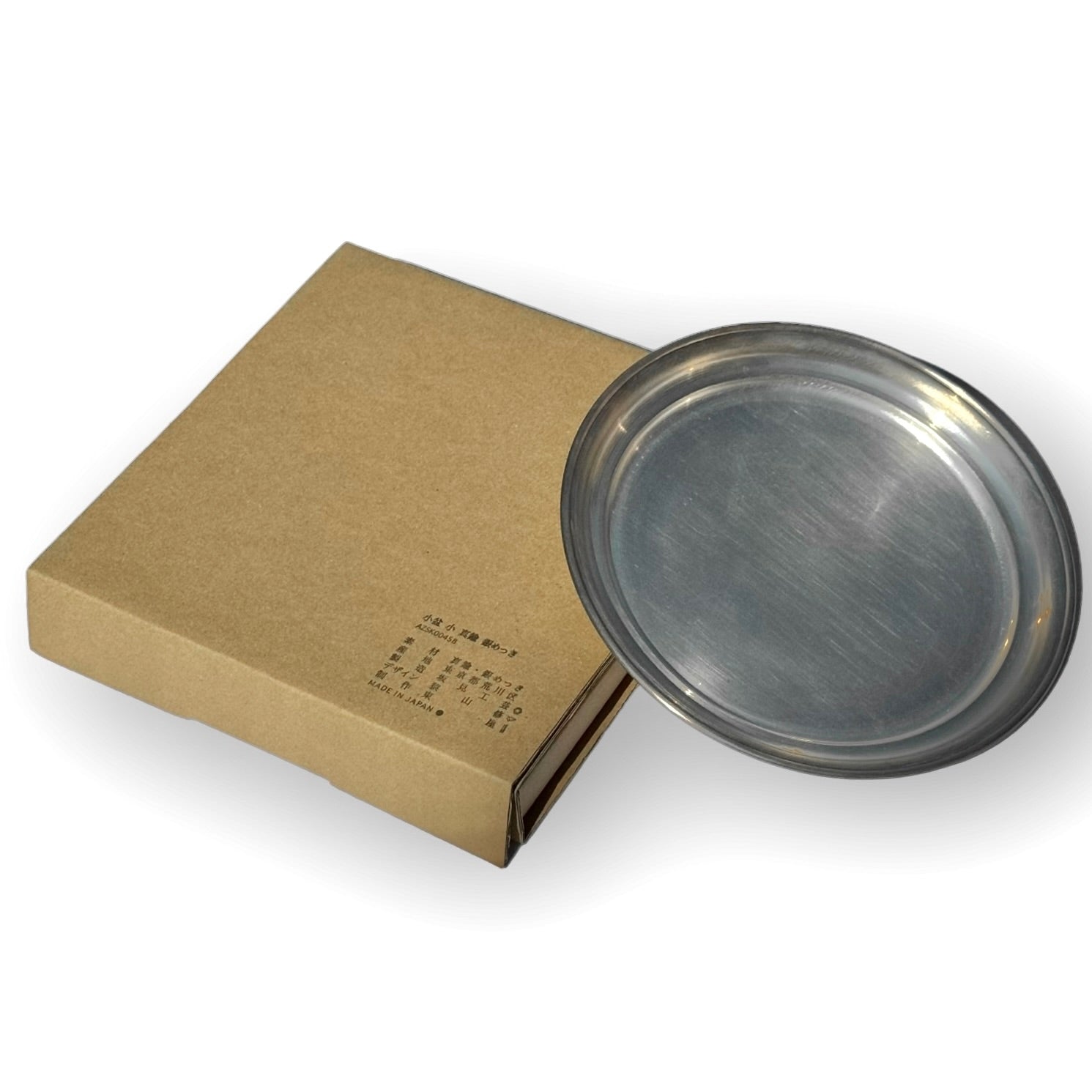
Plateau japonais 'Obon' fait main en laiton argenté
Hors TVA. livraison seront indiquées lors du paiement
Expédié sous 1 à 2 jours ouvrés
Brass has been used in Japanese crafts since the Heian period (years 794-1185).
Our 'Obon' tray is handmade by Japanese Sakami Kogei who creates the tray using a traditional Japanese craft called 'Hera Shibori'.
It is a method where a brass plate is fixed in a mold and rotated while the plate is pressed against the mold with a rod called a spatula. It takes great craftsmanship and experience to know exactly how to angle the spatula and how much force to apply.
Finally, the tray is given a brushed finish by a traditional matting process called 'Metsuke'.
'Obon' is made to be used and the brushed surface only gets more beautiful with daily use.
'Obon' has a fascinatingly simple and functional beauty and is made for serving and for storage and organization in your home.
The tray comes in two sizes and is available in brass or silver-plated brass.
Maintenance:
-
Wipe with a dry soft cloth after use.
-
When the tray is used, the metal will dull over time due to oxidation and sulfur formation. Especially in the areas that are often touched by hands or tools.
-
In Japan, this natural patina is appreciated and the unique texture is called 'Atari'.
-
A Japanese would never polish his metal things, so leave it alone!
The Sakami Kogei workshop in Tokyo is owned by Mr. Sakami, who has been engaged in metal processing for 26 years.
Although he is the founder, Mr. Sakami not strictly speaking the "first generation".
He was born into a family in Kyoto that has lived as metal workers for generations.
As Mr. Sakami says:
“My parents, my siblings, my cousins, my relatives, they all do metalwork.
There's metalwork everywhere you look - it's an ancient craft."
A large part of the production takes place on a heavy lathe, where round metal trays and plates are created. The traditional Japanese craft is called 'Hera Shibori'. It is a method where a sheet of metal is fixed in a mold and rotated while the sheet is pressed against the mold with a rod called a spatula. It takes great craftsmanship and experience to know exactly how to angle the spatula and how much force to put in. Finally, the tray is given a brushed finish by a traditional matting process called 'Metsuke'. 




Créations Authentiques, Photos Honnêtes
Chez nous, l'artisanat et le produit sont au cœur de tout. Pour vous donner l'impression la plus authentique possible, nous avons choisi de réaliser nous-mêmes nos photos de produits.
Chaque photo de nos créations en bois que vous voyez est celle d'un produit réel que nous avons fabriqué pour un client. Pour garantir la meilleure présentation possible, nous pouvons ajuster numériquement la netteté et les couleurs ou placer le produit dans un environnement pertinent à l'aide de l'intelligence artificielle pour mieux le visualiser dans un contexte naturel.
Photos des variantes : ce qu'elles montrent
Nous élargissons constamment notre galerie de produits. Comme beaucoup de nos articles sont disponibles dans une multitude de tailles et de variantes, nous n'avons pas encore de photos pour chacune d'entre elles. L'image qui s'affiche lors de votre sélection illustre donc principalement l'essence de bois choisie – et pas nécessairement la taille ou la variation de design spécifique.
Chaque pièce de bois est unique
Le bois est un matériau naturel et vivant, et notre passion est de créer des produits de caractère. Les veinures et les nuances de couleur varient donc naturellement d'un produit à l'autre. Considérez nos photos comme une source d'inspiration et une indication de la haute qualité que nous nous engageons à fournir.
Une question ? Nous sommes là pour vous aider.
Avez-vous des questions sur le design, la taille, l'essence de bois ou des souhaits particuliers ? N'hésitez pas à nous contacter à info@rune-jakobsen.dk. Nous vous guiderons volontiers vers le bon choix avant que vous ne passiez votre commande.
Conditions générales de vente
Vous trouverez ici un aperçu complet de toutes les conditions d'achat chez Rune-Jakobsen Design. Nous avons fait de notre mieux pour vous le rendre aussi clair et compréhensible que possible. Pour toute question, n'hésitez pas à nous contacter.
Tarifs, remises et paiement
Devise, TVA et prix
Tous les prix de la boutique en ligne sont affichés dans votre devise locale. Les prix pour les clients de l'UE et de Norvège incluent toujours la TVA locale applicable. Pour plus d'informations sur les droits de douane, consultez la section ci-dessous.
Prix fixes et équitables : Nous croyons en la valeur du savoir-faire artisanal, c'est pourquoi nos prix sont les mêmes toute l'année. Nous ne participons pas aux soldes comme le Black Friday, mais proposons des avantages fixes :
- Bénéficiez de 15 % de réduction à l’achat de 3 produits en bois ou plus.
- Bénéficiez de 10 % de réduction à l'achat de 3 torchons ou plus.
- Trouvez de bonnes affaires sur les articles abandonnés et les prototypes dans notre Outlet .
- Inscrivez-vous à notre newsletter mensuelle pour recevoir des offres spéciales réservées aux abonnés.
💳 Paiement
Nous proposons des paiements sécurisés avec MasterCard, VISA, PayPal, Apple Pay, Google Pay, Shop Pay et MobilePay. Toutes les informations de paiement sont chiffrées (SSL) afin que seuls vous et votre émetteur de carte puissiez les lire.
Quand l'argent sera-t-il retiré ?
- Articles en stock : Le montant est réservé sur votre compte lors de la commande et n'est déduit que lorsque nous expédions votre colis.
- Menuiseries (produits en bois sur mesure) : Ces produits étant fabriqués à la main spécialement pour vous, la commande est considérée comme ferme. Le montant est donc déduit dès la validation de votre commande et le lancement de la production. Si vous regrettez votre achat avant le début de la production, nous vous rembourserons l'intégralité du montant.
Livraison et expédition
📦 Délais de livraison
Comme beaucoup de nos produits sont fabriqués à la main, les délais de livraison varient. Voici un aperçu :
- Boiseries (produits en bois Rune-Jakobsen) : Le délai de livraison prévu est indiqué sur la fiche produit. Pour toute question avant de commander, veuillez contacter Kari au (+45) 42 43 23 76.
- Céramiques et certains couteaux de cuisine (Ansø du Danemark et couteaux M) : Prévoyez un délai de livraison d'environ 2 à 3 semaines.
- Articles en stock (expédiés sous 1 à 2 jours ouvrables) : S'applique aux moulins à épices, aux bijoux, à la plupart des textiles et aux couteaux de chef japonais.
- Spécialement pour Læsø Plaid : prévoyez un délai de livraison d'environ 5 à 7 jours ouvrables.
🚚 Tarifs et méthodes d'expédition
Nous expédions par GLS, DHL ou UPS. Les options et les prix exacts sont calculés au moment du paiement en fonction de votre localisation et du poids de la commande. Voici un aperçu des prix de départ :
- Danemark : 49 DKK pour un envoi en point relais / 69 DKK pour un envoi privé. Livraison gratuite à partir de 2 500 DKK d'achat.
- Suède : à partir de 135 SEK. Livraison gratuite pour tout achat supérieur à 2 500 SEK.
- Norvège : à partir de 159 NOK. Livraison gratuite à partir de 4 000 NOK d'achat.
- Pays de l'UE : à partir de 9 EUR.
- Royaume-Uni (UK) : à partir de 14 GBP.
- Suisse / Liechtenstein : Dès 19 CHF.
- États-Unis : à partir de 35 USD.
- Canada : À partir de 49 CAD.
- Australie : à partir de 85 AUD.
- Nouvelle-Zélande : à partir de 110 NZD.
- Reste du monde : à partir de 35 USD.
Douanes, TVA et taxes
Nous expédions tous nos articles depuis le Danemark (UE). Vous trouverez ci-dessous un aperçu de ce que cela signifie pour vous.
🇪🇺 Commandes au sein de l'UE
Si vous achetez depuis un pays de l'UE, le prix affiché lors du paiement est le prix final. Tous les prix incluent la TVA de votre pays et aucun frais de livraison ne vous sera facturé.
🇳🇴 Clients en Norvège
Si vous achetez depuis la Norvège, vous pouvez être totalement rassuré. Le prix affiché lors du paiement est le prix total final. En effet, nous expédions votre colis en « DDP » (Delivered Duty Paid).
- Nous sommes enregistrés à la TVA en Norvège ( n° VOEC 2060051 ) et facturons la TVA norvégienne directement dans la boutique en ligne.
- Tous les droits de douane sur vos articles seront calculés et inclus dans le prix total au moment du paiement.
En d’autres termes, aucun frais ni coût supplémentaire ne vous sera facturé lors de l’importation en Norvège.
🌎 Commandes hors UE (Reste du monde)
Pour les pays hors UE et la Norvège, les commandes sont expédiées en « DAP ». Cela signifie que vous, en tant que client, êtes responsable du paiement des frais d'importation locaux (douanes, TVA, frais) facturés par le transporteur à l'arrivée. Ces frais sont fixés par les autorités locales et échappent à notre contrôle.
🇫🇷 Clients en Grande-Bretagne (UK)
Pour les achats jusqu'à 135 GBP, aucun droit de douane n'est appliqué. Pour les commandes supérieures à ce montant, des droits d'importation britanniques seront appliqués. Pour en savoir plus sur les autorités britanniques, cliquez ici .
🇺🇸 Clients aux États-Unis
Les commandes passées via l'application Shop (depuis Shopify) seront automatiquement soumises à la taxe de vente américaine applicable. Les commandes passées directement dans notre boutique en ligne sont soumises aux règles générales d'importation décrites ci-dessus.
⏎ Retours et réclamations
Politique d'annulation de 30 jours
Vous disposez de 30 jours à compter de la réception pour nous signaler votre achat. Vous disposez ensuite de 8 jours supplémentaires pour retourner l'article. Le droit de rétractation s'applique à tous les produits standard.
Exception : Pour les produits fabriqués sur mesure, le droit de rétractation ne s'applique que si cela a été convenu par écrit au préalable.
Comment retourner
- Veuillez nous signaler votre retour à hello@rune-jakobsen.design .
- Emballez l'article en toute sécurité, dans un état neuf et non endommagé.
- Envoyez le colis à l'adresse ci-dessous. Les frais de retour seront à votre charge, sauf s'il s'agit d'une réclamation.
Adresse de retour:
Conception de Rune Jakobsen
À l'attention de : Kari Rune-Jakobsen
Tiendemarken 14 A, Gudum
9280 Storvorde
Danemark
Clients danois : vous pouvez commander une étiquette de retour via Shipmondo ici (s'applique uniquement aux annulations).
Une fois que nous aurons reçu l'article retourné, nous vous rembourserons le montant total de l'achat.
Plainte
Conformément à la loi danoise sur la vente, vous bénéficiez d'une garantie de 2 ans contre les défauts de fabrication et de matériaux. Cette garantie ne couvre pas les défauts ou l'usure résultant d'une mauvaise utilisation, de violences ou d'un manque d'entretien.
Si vous souhaitez déposer une réclamation concernant un article, veuillez nous contacter dans les plus brefs délais, au plus tard 14 jours après la découverte du défaut. Si votre réclamation est acceptée, nous prendrons bien entendu en charge les frais de retour.
Mentions légales et contact
Avis de non-responsabilité et droits de propriété intellectuelle
Tous les produits sont vendus « en l'état » et il est de la responsabilité du client de les utiliser de manière sûre et appropriée. Rune-Jakobsen Design décline toute responsabilité en cas de dommages résultant d'une mauvaise utilisation ou d'une utilisation incorrecte. L'intégralité du contenu de ce site web (textes, images, design) appartient à Rune-Jakobsen Design et ne peut être copiée sans autorisation écrite.
Informations sur l'entreprise
Conception de Rune Jakobsen
par Torben et Kari Rune-Jakobsen
Tiendemarken 14 A, Gudum
9280 Storvorde, Danemark
CVR : DK27029167
VOEC norvégien : 2060051
Contactez-nous
Si vous avez des questions, nous sommes là pour vous aider.
Téléphone : (+45) 42 43 43 93 / (+45) 42 43 23 76
Courriel : info@rune-jakobsen.dk
📦 Livraison
Délais de livraison
Comme beaucoup de nos produits sont fabriqués à la main sur commande, les délais de livraison varient. Voici un aperçu pour vous aider à comprendre :
- Boiseries (produits en bois Rune-Jakobsen) :
En raison de la forte demande pour les produits artisanaux de la menuiserie Rune-Jakobsen, un délai de livraison est à prévoir. Le délai de livraison actuel est indiqué sous chaque produit sur la page produit. Pour toute question avant de commander, n'hésitez pas à contacter Kari par téléphone au (+45) 42 43 23 76 ou par e-mail à info@rune-jakobsen.dk - Céramiques et certains couteaux de cuisine (Ansø du Danemark et M-knives)
Ces produits sont également fabriqués sur commande. Prévoyez un délai de livraison d'environ 2 à 3 semaines. - Articles en stock (livraison en 1 à 2 jours) :
Les moulins à épices, les bijoux de Scherning CPH, textiles de maison et les couteaux de chef japonais sont en stock et expédiés sous 1 à 2 jours ouvrables. - Læsø Plaid :
Prévoyez un délai de livraison d'environ 5 à 7 jours ouvrables.
🚚 Livraison et tarifs
Expédition
Nous proposons une livraison flexible avec GLS, DHL ou UPS. Les options et transporteurs exacts dépendent de votre localisation et vous seront indiqués lors du paiement.
Tarifs d'expédition
Le prix de la livraison dépend de votre localisation et du poids de l'envoi. Voici un aperçu de nos prix de départ. Le prix final est toujours calculé au moment du paiement.
- Danemark : 49 DKK pour un envoi en point relais / 69 DKK pour un envoi privé. Livraison gratuite à partir de 2 500 DKK d'achat.
- Suède : à partir de 135 SEK. Livraison gratuite pour tout achat supérieur à 2 500 SEK.
- Pays de l'UE : à partir de 9 EUR.
- Norvège : à partir de 159 NOK. (Voir les informations douanières et TVA ci-dessous).
- Royaume-Uni (UK) : à partir de 12 GBP.
- Suisse / Liechtenstein : Dès 19 CHF.
- États-Unis : à partir de 35 USD.
- Canada : À partir de 49 CAD.
- Australie : à partir de 85 AUD.
- Nouvelle-Zélande : à partir de 89 NZD.
- Reste du monde : à partir de 35 USD.
🛃 Douanes, TVA et taxes
Nous expédions tous nos articles depuis notre base au Danemark (UE). Vous trouverez ci-dessous un aperçu de ce que cela signifie pour vous.
🇪🇺 Commandes au sein de l'UE
Si vous achetez depuis un pays de l'UE, le prix affiché lors du paiement est le prix final. Tous les prix incluent la TVA de votre pays et aucun frais de livraison ne vous sera facturé.
🇳🇴 Clients en Norvège
Si vous achetez depuis la Norvège, vous pouvez être totalement rassuré. Le prix affiché lors du paiement est le prix final et total. En effet, nous expédions votre colis en « DDP ».
- Nous sommes enregistrés à la TVA en Norvège ( n° VOEC 2060051 ) et facturons la TVA norvégienne directement dans la boutique en ligne.
- Tous les droits de douane sur vos articles seront calculés et inclus dans le prix total au moment du paiement.
En d’autres termes, aucun frais ni coût supplémentaire ne vous sera facturé lors de l’importation en Norvège.
🌎 Commandes hors UE
Pour les autres pays hors UE, les commandes sont envoyées en « Delivered At Place » (DAP).
Cela signifie pour vous en tant que client :
- Vous êtes responsable du paiement des frais d'importation prélevés par la compagnie maritime à l'arrivée dans votre pays. Ces frais peuvent inclure les droits de douane, la TVA à l'importation et les frais de manutention.
- Ces frais sont fixés par les autorités locales de votre pays et sont hors de notre contrôle.
Bon à savoir : De nombreux pays appliquent un seuil minimal pour les commandes inférieures à une certaine valeur, qui est exonéré de droits de douane. En cas de doute, nous vous recommandons de vérifier les règles applicables dans votre pays auprès des autorités douanières locales.
En effectuant un achat, vous acceptez ces conditions.
🇫🇷 Clients en Grande-Bretagne (UK)
Pour les achats jusqu'à 135 GBP, nos produits sont exonérés de droits de douane. Pour les commandes supérieures à ce montant, des droits d'importation britanniques vous seront facturés. Pour en savoir plus sur les autorités britanniques, cliquez ici .
🇺🇸 Clients aux États-Unis
À compter du 1er janvier 2025, la taxe de vente américaine applicable sera automatiquement appliquée aux commandes passées via l'application Shop (depuis Shopify) lors du paiement. Cette mesure s'applique à tous les États appliquant la taxe de vente. Les commandes passées directement dans notre boutique en ligne (y compris via Shop Pay) sont exemptées de ce calcul automatique et sont soumises aux règles générales d'importation décrites ci-dessus.
ℹ️ Informations générales
Sous réserve de modifications
Rune-Jakobsen Design se réserve le droit de modifier et de mettre à jour en permanence les prix, les termes et conditions.
Contact
Si vous avez des questions, nous sommes là pour vous aider.
Téléphone : (+45) 42 43 43 93
Courriel : info@rune-jakobsen.dk
⏎ Droit de rétractation
Vous disposez de 30 jours après réception pour nous signaler que vous regrettez l'achat, puis vous disposez de 8 jours supplémentaires pour le renvoyer.
Le droit de rétractation s'applique à tous les produits standards de la boutique en ligne.
Le droit de rétractation et de retour pour les produits sur mesure dans des tailles spéciales n'est valable que si un accord spécial (écrit) a été conclu.
Si vous regrettez votre achat et retournez le(s) article(s), nous vous rembourserons le montant total de l'achat lorsque le(s) article(s) nous seront retournés dans un état inutilisé et non endommagé.
⛓️💥 Réclamations
Conformément à la loi danoise sur les ventes, Rune-Jakobsen Design accorde une garantie de 2 ans à compter de la date de facturation pour les défauts de fabrication et de matériaux (défauts).
Les réclamations concernant des défauts ou des dommages aux produits livrés doivent être adressées à Rune-Jakobsen Design dans les 14 jours suivant la réception du ou des articles.
Le droit de réclamation ne couvre pas les erreurs, dommages ou usures, résultant directement ou indirectement d'un mauvais fonctionnement, d'un entretien incorrect, de violences ou d'interventions non autorisées.
Si vous annulez votre achat, vous pouvez utiliser une société de transport de votre choix et prendre en charge les frais liés au retour.
En cas de retour dû à une réclamation, Rune-Jakobsen Design prendra en charge les frais de retour.
Les retours doivent être effectués à :
Conception de Rune Jakobsen
À l'attention de : Kari Rune-Jakobsen
Tiendemarken 14 A, Gudum
9280 Storvorde
Danemark
Nous expédions tous nos articles depuis notre base au Danemark (UE). Vous trouverez ci-dessous un aperçu de ce que cela implique pour vous.
🇪🇺 Pour les clients résidant dans l'UE
Si vous achetez depuis un pays de l'UE, le prix affiché au moment du paiement est le prix final. Tous les prix incluent la TVA de votre pays et aucun frais de livraison ne vous sera facturé.
🇳🇴 Clients en Norvège
Nous sommes enregistrés à la TVA en Norvège (VOEC 2060051) et facturons la TVA norvégienne directement sur notre boutique en ligne. Nous ne facturons pas de droits de douane.
Pour les commandes inférieures à 3 000 NOK, aucun droit de douane ne sera facturé à la livraison.
Pour les commandes supérieures à 3 000 NOK, la société de transport vous facturera des droits de douane à la livraison.
REMARQUE : Dans certains cas, nous constatons que la société de transport facture également par erreur la TVA lors de la livraison de commandes supérieures à 3 000 NOK.
Si cela se produit, nous vous recommandons de régler le montant total auprès de la société de transport afin que vous puissiez recevoir votre colis.
Contactez-nous ensuite à info@rune-jakobsen.dk et joignez les frais de la compagnie maritime, après quoi nous vous rembourserons la TVA.
🇺🇸/🇨🇦 Pour les clients américains et canadiens
Expédition sans tracas
Nous expédions toutes les commandes aux États-Unis et au Canada DDP (Delivered Duty Paid) .
Cela signifie que les droits d'importation et les tarifs sont calculés et payés directement au moment du paiement dans notre boutique en ligne, sans frais cachés ni frais inattendus lors de la livraison.
🇫🇷 Pour les clients du Royaume-Uni
La majorité de nos produits sont fabriqués à la main au Danemark ou ailleurs dans l'UE et sont donc éligibles à l'importation en franchise de droits dans le cadre de l'accord de commerce et de coopération UE-Royaume-Uni (ACC).
Cela signifie:
✅ Pas de droits de douane
La plupart de nos produits étant originaires de l'UE , ils ne sont généralement pas soumis aux droits d'importation britanniques . Nous fournissons tous les documents nécessaires pour garantir un processus douanier fluide.
Si vous avez des doutes sur le pays d'origine d'un produit, veuillez contacter Kari à kari@rune-jakobsen.dk
TVA au Royaume-Uni
Nous ne sommes pas enregistrés à la TVA au Royaume-Uni et ne facturons donc pas de TVA à la caisse .
Au lieu de cela, la TVA britannique (actuellement 20 %) sera facturée à la livraison , quelle que soit la valeur de la commande.
Vous serez contacté par le transporteur (généralement DHL, UPS ou similaire) et invité à payer la TVA avant la livraison du colis.
Veuillez noter:
-
Ceci s'applique à toutes les commandes , quel que soit le montant total.
-
Des frais de traitement minimes peuvent également être facturés par le transporteur pour le traitement de la TVA à l'importation au Royaume-Uni.
🇨🇭 Clients en Suisse
Toutes les commandes sont expédiées en livraison livrée (DAP). Cela signifie que vous êtes responsable du paiement des frais d'importation locaux (douanes, TVA, frais) facturés par le transporteur à l'arrivée.
Ces frais sont fixés par les autorités suisses et échappent à notre contrôle.
🌎 Pour les clients résidant dans d'autres pays hors UE
Pour les autres pays hors UE, les commandes sont envoyées en « Delivered At Place » (DAP).
Cela signifie:
- Vous êtes responsable du paiement des frais d'importation prélevés par la compagnie maritime à l'arrivée dans votre pays. Ces frais peuvent inclure les droits de douane, la TVA à l'importation et les frais de manutention.
- Ces frais sont fixés par les autorités locales de votre pays et sont hors de notre contrôle.
Bon à savoir : De nombreux pays appliquent un seuil de minimis pour les commandes inférieures à une certaine valeur, qui sont exonérées de droits de douane. En cas de doute, nous vous recommandons de vérifier les règles applicables dans votre pays auprès des autorités douanières locales.
En effectuant un achat, vous acceptez ces conditions.
ℹ️ Informations générales
Sous réserve de modifications
Rune-Jakobsen Design se réserve le droit de modifier et de mettre à jour en permanence les prix, les termes et conditions.
Contact
Si vous avez des questions, nous sommes là pour vous aider.
Téléphone : (+45) 42 43 43 93
Courriel : info@rune-jakobsen.dk
Choisir les options









